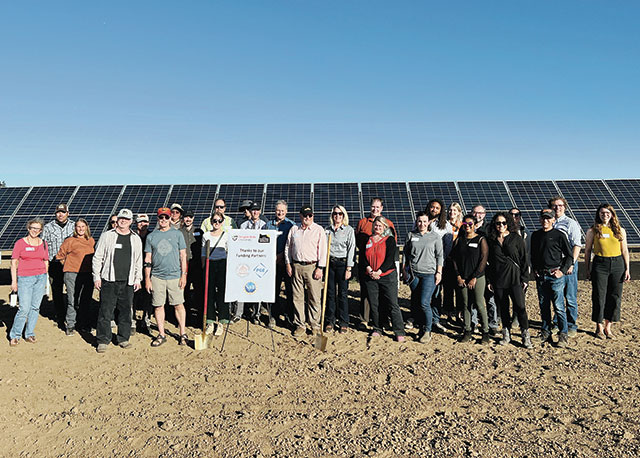AGRICULTURE
Agrivoltaics Research Facility at NWREC

At long last, construction on the NWREC Agrivoltaics Facility has started! Agrivolatics is an innovative practice combining agriculture (agri-) and solar energy production (-voltaics) on the same land.
Instead of competing for land use, OSU researchers have found that solar and agriculture can share land — for the benefit of both. Solar panels create a microclimate that reduces evaporation and increases soil moisture retention, which can improve irrigation efficiency, reducing drought stress. In exchange, vegetation lowers the panel temperature, increasing the efficiency of electrical production.
Supplemental income from electrical production can also provide financial resilience for farmers. NWREC’s facility is one of only three agrivolatic research facilities in the U.S. and the only one designed to be used as a commercial farm. The project is a partnership between Oregon State University and the Oregon Clean Power Cooperative. The facility covers five acres and produces 326 kW (AC) of electricity. Electricity produced is available for purchase through Oregon’s Community Solar Program.
Unlike normal solar arrays, the NWREC facility is designed to be farmed. Here’s how it differs from other solar arrays you may have seen:
A) Panel rows are spaced over 25 feet apart, allowing a tractor to drive through;
B) Panels rotate on-demand to a nearly vertical position, allowing access to farm equipment;
C) Electrical wires are buried at a depth of 42 inches to allow tilling;
D) Panels are bifacial and semi-transparent, meaning they let some light pass through, reaching the plants below. These panels absorb light from both sides, making use of light reflected off plants.
The first experiments will evaluate irrigation efficiency and the success of growing 12 plant species. The facility will be open to community members for tours in Spring 2023.
